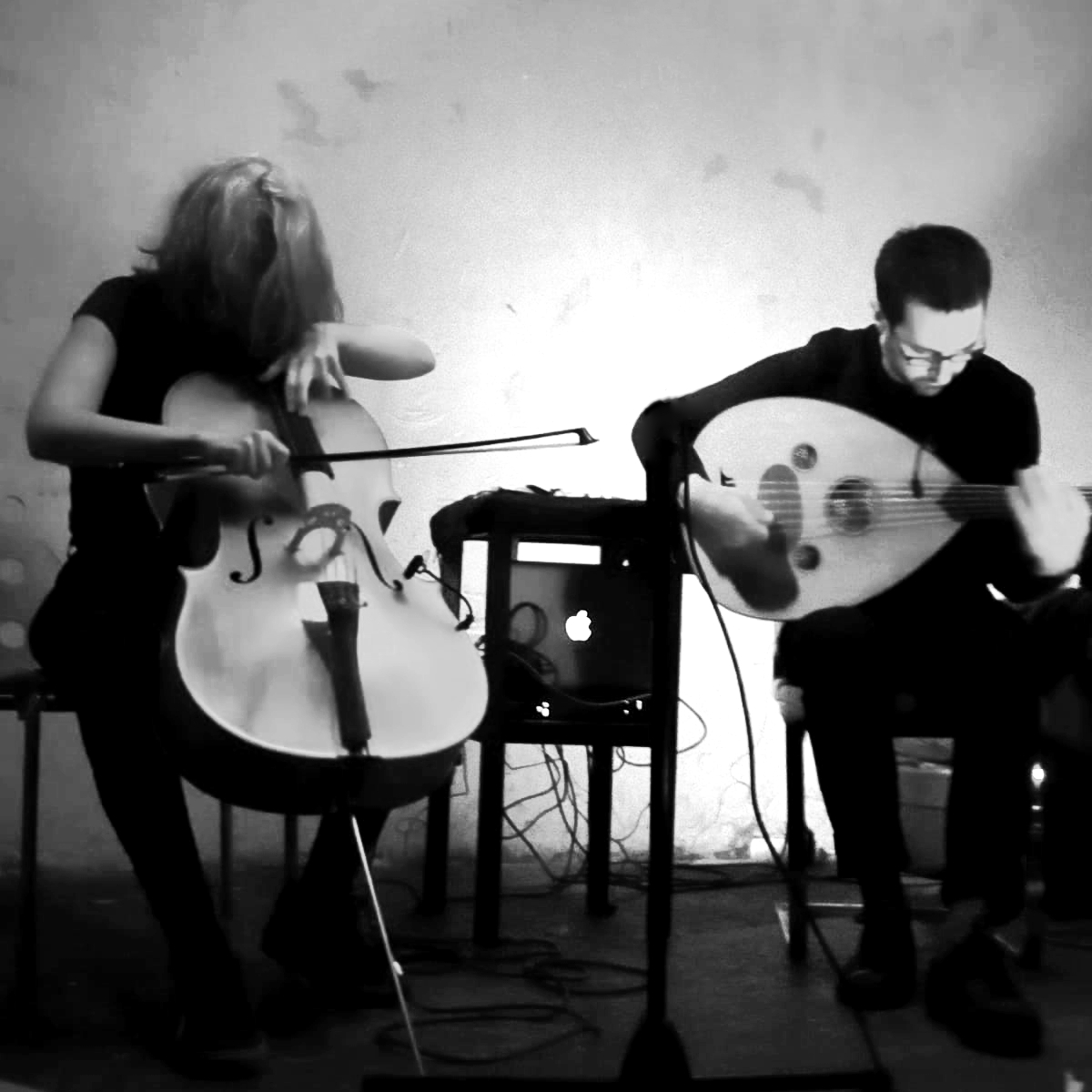

the tongue is an eye
paula sanchez | cello
christian moser | oud
free improvisation
inscape on ︎︎︎bandcamp
extravios on ︎︎︎bandcamp
paula sanchez | cello
christian moser | oud
free improvisation
inscape on ︎︎︎bandcamp
extravios on ︎︎︎bandcamp
Argentinian cellist and artist Paula Sanchez and Swiss oud-player Christian Moser unite for an imagining of previously unheard encounters. Their communication is shaped by exploring uncommon territories, limits and edges, the surface tension of sounds and their density and openness. Trust and connectivity enable their music to be always mutable, to incorporate the moment, the space and the listener. “What does the music do? What new affects does it create and what new connections does it allow?” Such questions are the driving force that propels the duo into the creation of unique performances that capture the spirit of the moment in which they are played.
The duo has, to date, released two albums:
Extravios (self-released, July 2020)
Inscape (November 2020, creative sources records)
Review by Jack Davidson from noisenotmusic for “extravios”
An album’s cover is frequently a reliable indicator of how harrowing of an experience the music contained within will be. This is certainly true for Extravios, the first release by the duo of Christian Moser and Paula Sanchez under the name The Tongue Is an Eye, whose artwork is not overtly disturbing yet barely belies a dark uneasiness (my theory is that the covering of the eyes of a human face, while the mouth remains visible, triggers a response of revulsion consistent with the Uncanny Valley phenomenon). The three improvisations that comprise the album are restless hodgepodges of tensile agitation, percussive clatter, and nocturnal claustrophobia, with both Moser and Sanchez contributing conventional instruments abused with extended techniques (oud and cello, respectively) as well as objects and found ephemera. Sanchez also makes use of abstract vocalization on “Fibra 2,” the longest and most diverse of the three, her stuttering inhales and strangled utterances colliding with equally unpredictable shards of unidentifiable rattle and pained string emissions. The second half of this piece gravitates toward the enrapturing interplay between the oud and cello, the recordings sounding as if they were captured with microphones less than centimeters away from the necks as sliding fingers and atonal attacks snake directly into the eardrums. This could either be a document of the duo’s first meeting or the culmination of many rehearsal sessions; the two musicians have mastered an approach to interaction that somehow sounds both tentative and seasoned. I certainly look forward to hearing more of their wonderfully bizarre and confrontational creations.
The duo has, to date, released two albums:
Extravios (self-released, July 2020)
Inscape (November 2020, creative sources records)
Review by Jack Davidson from noisenotmusic for “extravios”
An album’s cover is frequently a reliable indicator of how harrowing of an experience the music contained within will be. This is certainly true for Extravios, the first release by the duo of Christian Moser and Paula Sanchez under the name The Tongue Is an Eye, whose artwork is not overtly disturbing yet barely belies a dark uneasiness (my theory is that the covering of the eyes of a human face, while the mouth remains visible, triggers a response of revulsion consistent with the Uncanny Valley phenomenon). The three improvisations that comprise the album are restless hodgepodges of tensile agitation, percussive clatter, and nocturnal claustrophobia, with both Moser and Sanchez contributing conventional instruments abused with extended techniques (oud and cello, respectively) as well as objects and found ephemera. Sanchez also makes use of abstract vocalization on “Fibra 2,” the longest and most diverse of the three, her stuttering inhales and strangled utterances colliding with equally unpredictable shards of unidentifiable rattle and pained string emissions. The second half of this piece gravitates toward the enrapturing interplay between the oud and cello, the recordings sounding as if they were captured with microphones less than centimeters away from the necks as sliding fingers and atonal attacks snake directly into the eardrums. This could either be a document of the duo’s first meeting or the culmination of many rehearsal sessions; the two musicians have mastered an approach to interaction that somehow sounds both tentative and seasoned. I certainly look forward to hearing more of their wonderfully bizarre and confrontational creations.